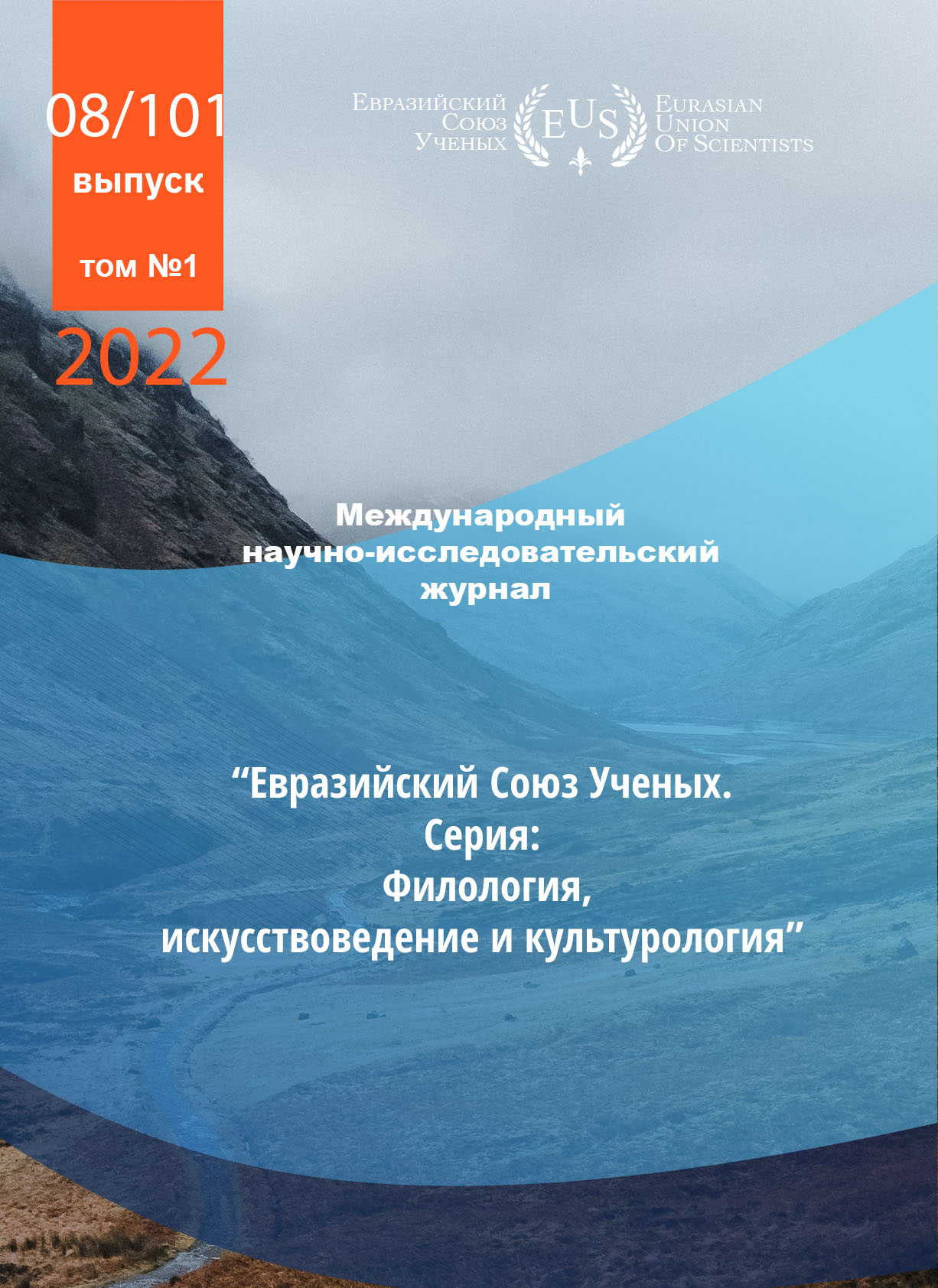“THE CORPORATIVE STUDY OF MONGOLIAN KOREAN COMMON LIFE FOLKTALE PORTRAYAL”
Abstract
The globality of oral literature is not limited to this. We know that due to the proximity of the origin of peoples
and cultural and historical relations, there is quite a lot in common in characters, images and narratives. Oral prose
is not only the art of the word, but also a form of intellectual practice and human activity. In other words, it can be
called synthetic art, a single form of people's intellectual culture, since it is aimed at satisfying intellectual or
aesthetic needs and has practical significance.
References
lekcүүd” UB., 1998 Batzhavhlan Je., Battөr Sh., Mөnh-Orgil A. “HH zuuny mongolyn uran zohiol” UB., 2017 Gaadamba.Sh “Utga zohiolyn onolyn үndjes” UB.,1989
Gaadamba Sh., Sampildjendjev H. “Mongol ardyn aman zohiol” UB., 1988 Dajrijmaa.B “Mongol ardyn үlgjerijn baatruudyn uran dүrsljelijn onclog” UB.,2017 Dulam S., Nandinbilig G. “Mongol aman zohiolyn onol” UB., 2007, 2020 Dulam.S., Hasbaatar.C “Uran zohiolyn onolyn үүd” UB.,1980 Zhigmjedsүrjen.S “Mongol ardyn үlgjer I, II” UB.,2013 “Mongol uran zohiolyn njevtjerhij tol' I” UB.,2022 “Mongol uran zohiolyn njevtjerhij tol' II” UB.,2022 “Mongol uran zohiolyn njevtjerhij tol' III” UB.,2022
Mөnhbajar B. “Mongol aman zohiolyn udirtgal” UB., 2015 Nadmid Zh. “Mongol ardyn үlgjer” UB., 1957 Horloo P. “Mongol ardyn javgan үlgjer” UB., 1960 Horloo P. “Dorno dahiny ard tүmnij үlgjerijn harilcan nөlөөllijn asuudald” “Aman zohiol sudlal” XIX bot' UB.,1995 Cjevjel. Ja “Mongol hjelnij tovch tajlbar tol'” UB.,2013 Cjevjejendorzh.D “Mongolyn utga zohiolyn dүrijn onol” UB.,2008 Cjerjensodnom D., Gaadamba Sh. “Mongol aman zohiolyn djejezh bichig” 1967, 1976Chүltjemsүrjen R. “Mongol aman bilig” UB., 2009 “Solongosyn ardyn үlgjerүүd” UB., 1953 “Solongos ardyn үlgjerүүd” UB., 1966
2. Na Korejskom
강등학 ‘한국 구비 문학의 이해’ 월인, 2000 강은해 ‘한국 설화문학 연구’ 2006, 계명대학교 출판부 고문속 ‘아동문학교육’ 2007, 양서원 김성배 “한국의 민속” 민속대백과사전
임동권 “한국민속문화론” 조희웅 ‘설화학 강요’ 새문사., 1988 주채혁 ‘몽고 민담’ 정음사., 1984 최운식, 김기창 ‘전래동화 교육론’ 집문당., 1988 최운식 ‘한국 설화 연구’ 1991
CC BY-ND
A work licensed in this way allows the following:
1. The freedom to use and perform the work: The licensee must be allowed to make any use, private or public, of the work.
2. The freedom to study the work and apply the information: The licensee must be allowed to examine the work and to use the knowledge gained from the work in any way. The license may not, for example, restrict "reverse engineering."
2. The freedom to redistribute copies: Copies may be sold, swapped or given away for free, in the same form as the original.







